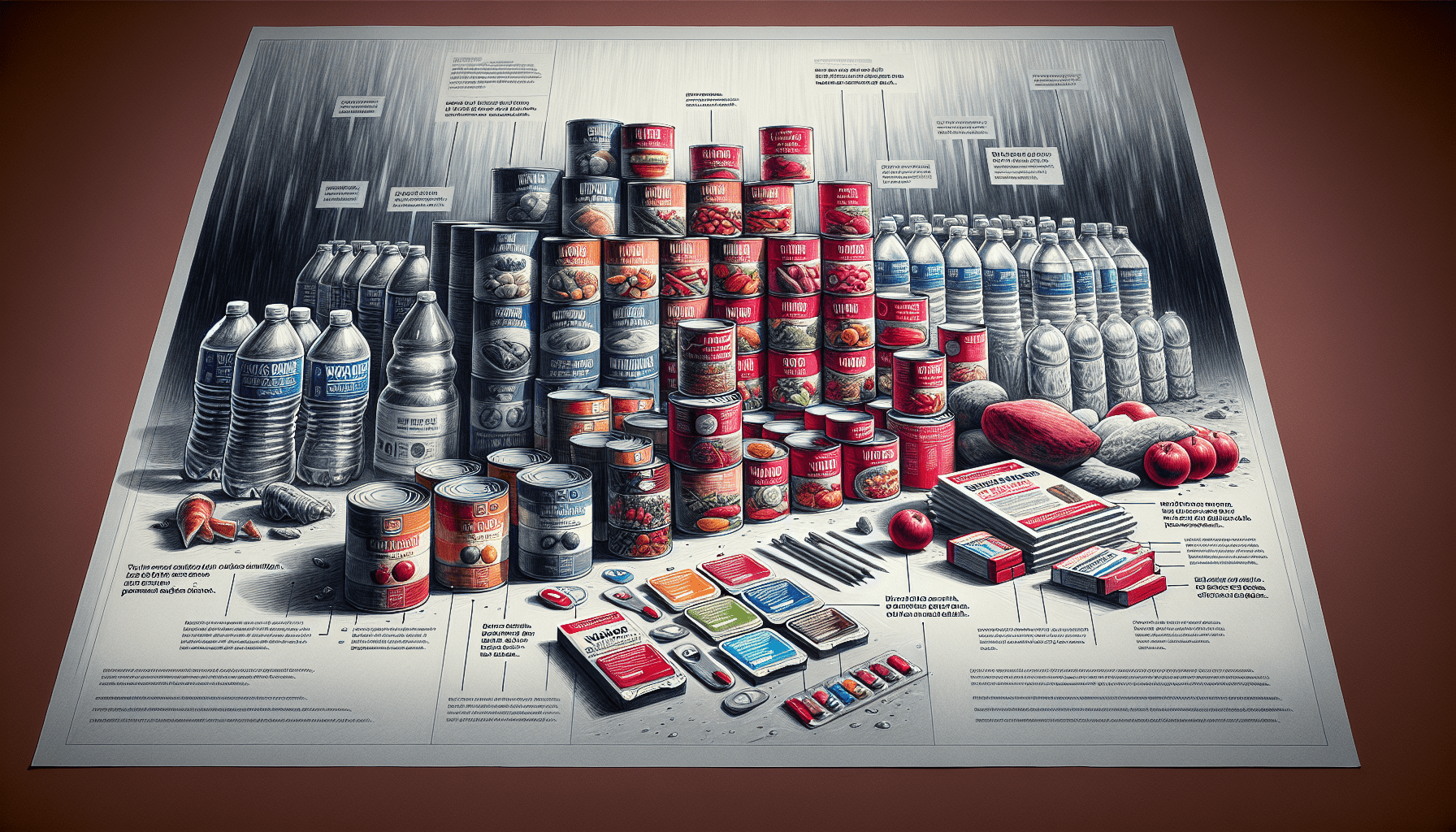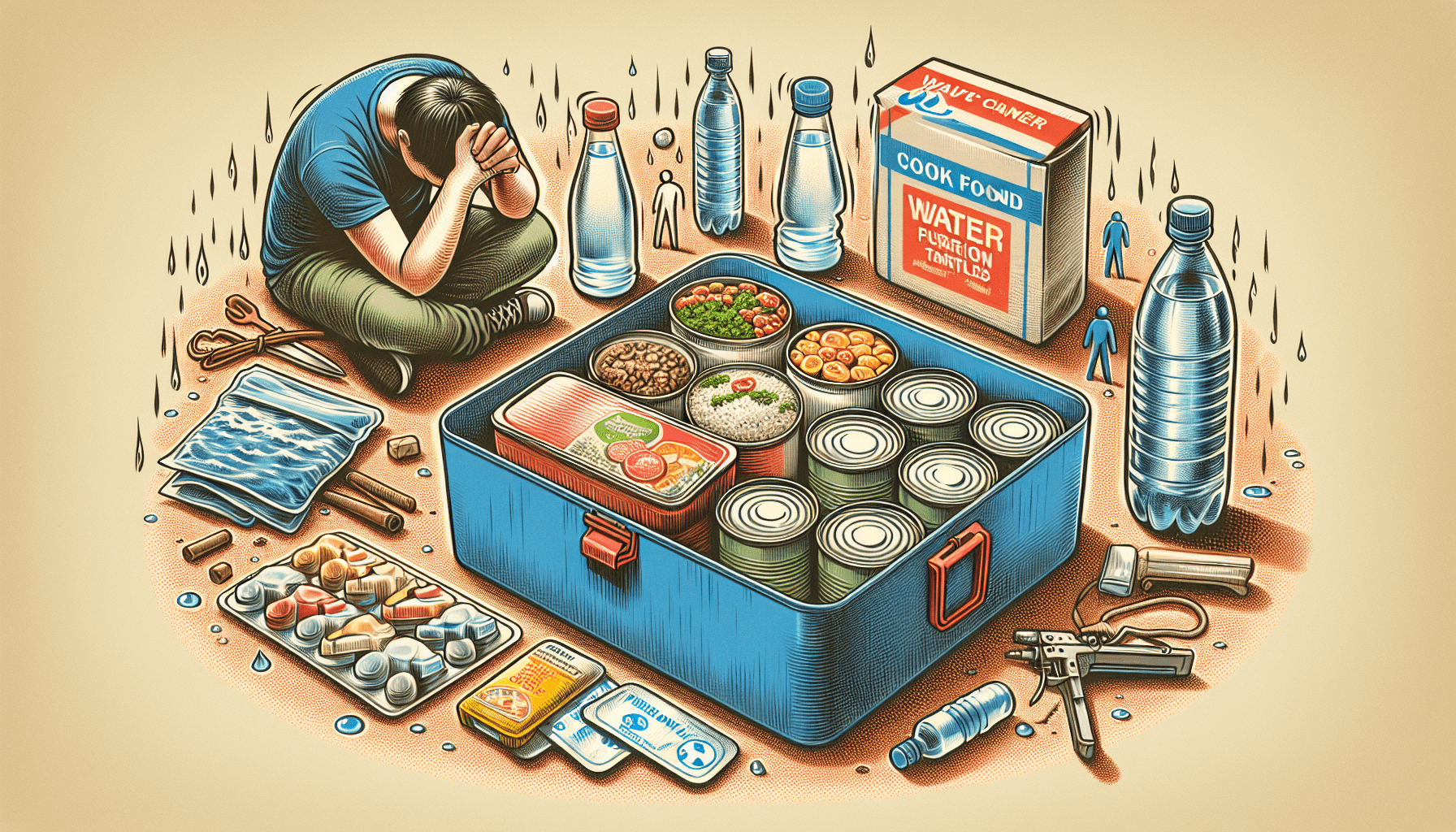In the event of an emergency, having a well-stocked emergency preparedness kit is crucial. However, among the most vital components that should never be overlooked are water and food. These basic essentials not only provide sustenance, but they also play a crucial role in keeping you strong and resilient during a crisis. Whether it’s a natural disaster or unforeseen circumstances, having an ample supply of water and nutritious food can make all the difference in ensuring your well-being. So, let’s explore why water and food should be at the top of your emergency preparedness checklist.

Why Water and Food Are Essential in Your Emergency Preparedness Kit
Subheading 1.1: The Importance of Water in Emergency Preparedness
When it comes to preparing for an emergency, one of the most crucial elements you need to consider is water. Water is essential for survival, and having an adequate supply in your emergency preparedness kit can mean the difference between life and death. In times of crisis, access to clean drinking water may be limited or completely cut off. That’s why it is vital to have a sufficient amount of water stored in your kit to sustain you and your loved ones until help arrives or conditions improve.
Lack of water can lead to dehydration, which can have severe consequences on your health. Dehydration can cause dizziness, fatigue, confusion, and even organ failure in extreme cases. In emergency situations, where stress and physical exertion are heightened, the risk of dehydration is even greater. Therefore, it is crucial to have enough water to stay hydrated and maintain your overall well-being during uncertain times.
Subheading 1.2: How Much Water should you Store?
Now that you understand the importance of water in your emergency preparedness kit, it’s essential to determine how much water you should store. The general guideline is to have at least one gallon of water per person per day for a minimum of three days. This amount takes into consideration drinking, cooking, and basic hygiene needs. However, it is always better to err on the side of caution and store additional water if possible.
If you have pets or young children, remember to account for their water needs as well. Including them in your water storage calculations will ensure everyone’s well-being during an emergency. It’s also important to regularly check the expiration dates on your water containers and replace them as needed. Proper storage is key to maintaining the quality of your water supply, so make sure to store water in a cool, dark place away from direct sunlight.
Heading 2: The Importance of Food in Emergency Preparedness
While water is undoubtedly essential in an emergency, food also plays a crucial role in your survival. Adequate nutrition helps to maintain your energy levels and keeps you physically and mentally strong during challenging times. When disaster strikes, access to grocery stores and restaurants may be limited, making it crucial to have a sufficient supply of non-perishable and easy-to-prepare food in your emergency kit.
Subheading 2.1: Choosing the Right Emergency Food
When selecting food for your emergency preparedness kit, opt for items that have a long shelf life and require minimal preparation. Canned goods, dry pasta, rice, and dehydrated foods are excellent choices as they can last for a long time without spoiling. Aim for a variety of food items to ensure a balanced diet, and consider any dietary restrictions or allergies that you or your family members may have.
It is also important to regularly check the expiration dates on your food items and rotate them out as needed. This practice ensures that the food in your emergency kit remains fresh and safe to consume when the need arises. Additionally, consider including essential tools such as can openers, utensils, and a portable stove or campfire cooking equipment in your kit for food preparation.
Subheading 2.2: How Much Food should you Store?
Similar to water, it is crucial to have an ample supply of food to sustain yourself and your family during an emergency. The general recommendation is to have at least three days’ worth of non-perishable food for each person. However, depending on the nature of the emergency, it may be advisable to store more. Assess your family’s dietary needs and take into account factors such as age, activity level, and any medical conditions when determining the quantity of food to store.
Remember to periodically check the expiration dates of the food items in your emergency kit and replace them accordingly. It is also beneficial to keep a record of the food you have stored and create a rotation schedule to ensure that you are consuming and replacing items in a timely manner. This practice not only helps to avoid wastage but also ensures that you have a fresh supply of food when you need it most.

Heading 3: Additional Considerations for Your Emergency Preparedness Kit
While water and food are undoubtedly essential components of your emergency preparedness kit, there are a few more factors to consider to ensure your overall safety and well-being during a crisis.
Subheading 3.1: First Aid Supplies and Medications
In an emergency, access to medical help may be limited, making it crucial to have a well-stocked first aid kit in your emergency preparedness kit. Your first aid kit should include basic supplies such as bandages, antiseptic ointment, pain relievers, and any necessary prescription medications.
Ensure that your first aid kit is regularly inspected and replenished as needed. Check for expired medications and dispose of them properly. Keeping a list of your family members’ medical conditions, allergies, and current medications can also be helpful during an emergency situation.
Subheading 3.2: Emergency Contact Information
Maintaining a list of emergency contact information is essential in any emergency preparedness kit. Include the phone numbers of local authorities, hospitals, family members, and friends who can assist in times of need. Make sure to include out-of-town contacts as well, as they may be in a better position to communicate and offer assistance during a regional emergency.
Consider printing multiple copies of this information and storing them in different accessible locations, such as in your kit, wallet, and car. In times when communication networks may be overwhelmed or disrupted, having a physical copy of important contact information can prove invaluable.
Heading 4: Staying Prepared for Any Situation
While water, food, first aid supplies, and emergency contact information are essential components of your emergency preparedness kit, it is important to remember that each emergency is unique. It is wise to periodically reassess and update your kit based on your family’s requirements and any changes in your circumstances.
Stay informed about potential risks and hazards in your area and tailor your emergency preparedness kit accordingly. Don’t forget to consider additional items such as extra clothing, blankets, personal hygiene products, flashlights, batteries, and a portable radio to stay connected and informed during an emergency.
Regularly review and practice your emergency plan with your family members to ensure everyone knows what to do in case of an emergency. By staying prepared and taking the time to plan ahead, you can greatly increase your chances of staying safe and secure during uncertain times.
Remember that emergencies can happen at any moment, and being prepared is the best defense. By having a well-stocked emergency preparedness kit that includes water, food, first aid supplies, and contact information, you can ensure the safety and well-being of yourself and your loved ones in times of crisis. Take the time to put together your kit today and give yourself peace of mind knowing you are ready to face any situation.
